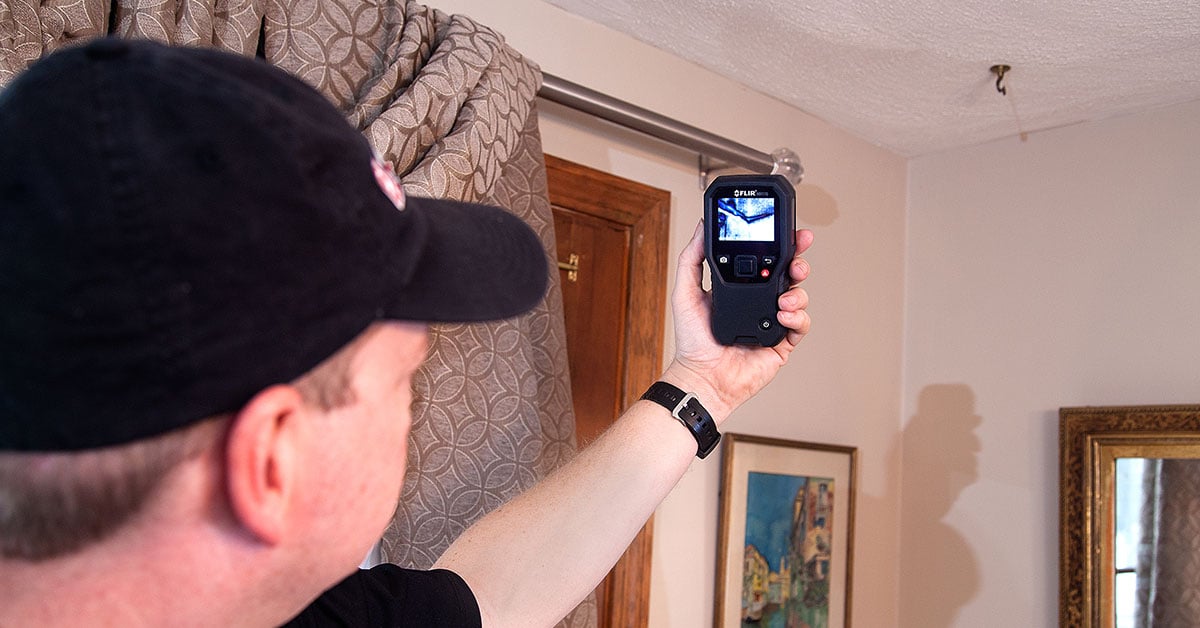We have encountered this article about Hacks to detect leaks down the page on the web and reckoned it made good sense to share it with you on my blog.

Early discovery of dripping water lines can minimize a potential catastrophe. Some small water leaks might not be noticeable.
1. Examine the Water Meter
Checking it is a surefire way that aids you find leakages. If it relocates, that suggests a fast-moving leakage. This indicates you might have a sluggish leak that might also be below ground.
2. Inspect Water Usage
Assess your water costs and also track your water intake. As the one paying it, you should see if there are any discrepancies. If you identify sudden changes, in spite of your intake coinciding, it indicates that you have leaks in your plumbing system. Keep in mind, your water costs ought to drop under the exact same range every month. A sudden spike in your expense suggests a fast-moving leakage.
A steady increase every month, even with the same habits, shows you have a slow-moving leakage that's also slowly intensifying. Call a plumber to extensively inspect your residential or commercial property, particularly if you feel a warm area on your flooring with piping underneath.
3. Do a Food Coloring Examination
30% comes from bathrooms when it comes to water consumption. Test to see if they are running properly. Decrease flecks of food color in the tank and also wait 10 mins. If the shade somehow infiltrates your dish throughout that time without flushing, there's a leakage in between the container and also bowl.
4. Asses Exterior Lines
Don't forget to examine your exterior water lines also. Needs to water permeate out of the connection, you have a loose rubber gasket. One little leakage can squander bunches of water and also spike your water bill.
5. Inspect and also Examine the Scenario
Property owners need to make it a behavior to examine under the sink counters as well as also inside closets for any kind of bad odor or mold and mildew development. These 2 red flags show a leak so prompt attention is needed. Doing regular evaluations, even bi-annually, can save you from a major problem.
Inspect for stainings and weakening as the majority of appliances as well as pipes have a life expectancy. If you presume dripping water lines in your plumbing system, do not wait for it to rise.
Early discovery of leaking water lines can minimize a prospective disaster. Some small water leakages might not be noticeable. Examining it is a surefire means that aids you discover leakages. One tiny leakage can waste heaps of water and also increase your water bill.
If you presume dripping water lines in your plumbing system, don't wait for it to escalate.
How to Know If Your Home Has a Hidden Leak
Water Meter Reveals Inexplicable Water Usage
If you’d like to test whether or not there’s a leak somewhere in your home, you can do this using your water meter. Here is how to conduct the test:
Don’t use any water in your home for at least 30 minutes; this also means not turning on faucets or water-using appliances.
Go outside, and check your water meter for activity.
If your water meter shows that there was activity, even though no one was using any water, this proves that there is a leak in your home.Visible Mold or Mildew Growth
Leaks behind walls create moist, dark environments that allow mold and mildew to grow and thrive. Eventually, you might see mold growth forming on the wall closest to a hidden leak.
If mold is growing in an area that receives a high amount of moisture, such as a bathroom, it may simply be an indication that better ventilation is needed. However, if you see mold growth on a wall or the ceiling in an area where you would not expect, you probably have a hidden leak.
Musty, Mildew Odor
Sometimes you might not be able to see the mold or mildew that is growing as a result of a leak. However, the smell can give the problem away just as easily. If you catch a whiff of something musty, there’s a good chance that old water is collecting somewhere in your home that you can’t see.
Stained/Warped Walls, Ceilings, or Floors
When your home soaks up water, a variety of red flags can become visible, including ceiling stains, bubbling drywall, warped walls, and sagging floors. While these issues can be caused by excess humidity, they can also be signs that a pipe or plumbing connection has started leaking behind your walls.
Inexplicably High Water Bill
After a while, you get a general sense for what your water bill should be. If you own a pool or sprinkler system, your bill will tend to be higher during summer. However, if you receive a water bill that seems especially high, and you can’t figure out what caused it, then you may have a hidden leak somewhere that’s increasing your bill.
https://www.plumbingjoint.com/blog/2019/july/how-to-know-if-your-home-has-a-hidden-leak/

Do you like reading up on Leaking water lines? Place a remark down below. We would be interested to know your thoughts about this blog entry. In hopes that you visit us again soon. So long as you liked our blog entry if you please remember to share it. Kudos for your time. Come back soon.